Marble is more than a trend, this material is a classic interior design feature, especially in our bathrooms.
The symbolism of marble
Marble is found throughout history and was a favourite during the Renaissance period. Marble creates an instantaneously sumptuous and noble finish. Even today, marble is considered as a luxury item to a certain degree and found in a high-end hotel or a palace.
The timeless elegance of marble has refreshed its look and is now adapted to interior design throughout our homes, not simply on the staircase or around the hearth. Marble is commonly used for backboards and work surfaces in kitchens, but this stylish rock is also an excellent option for bathroom walls and floors and makes an occasional appearance as a decorative object.
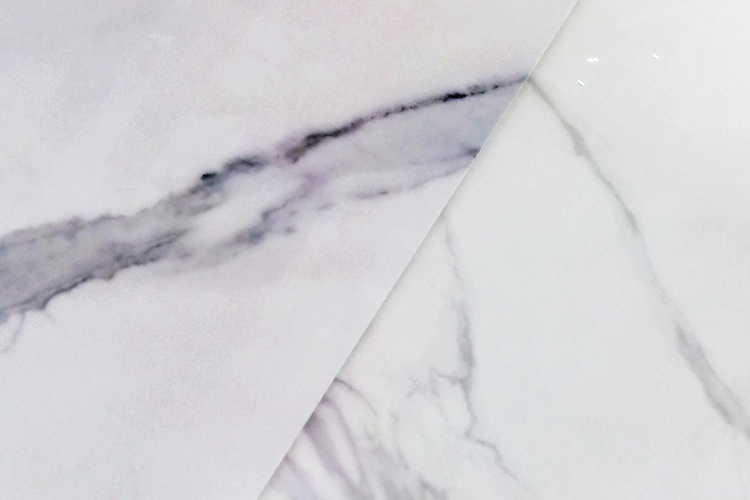
Selecting the right marble
Marble is available in a range of colours, from pure white to deep black, not forgetting grey, red or green. Marble can be adapted in many ways, frequently filling large expanses where imitation mosaics and vein features can be used to create a wide range of effects. Manufacturers rapidly understood that marble is back in fashion and offer a range of styles: from straight modern veins to dominant crazy patterns. Opting for marble will have a crucial impact on the intended final look and atmosphere.
It is essential to consider the future location of the marble in parallel with the style, particularly in small rooms such as a bathroom. Would the marble look best on the floor? On your shower wall? Or for a splashback behind a sink? Marble can adapt to any feature!
A multi-faceted material
Marble is frequently enough on its own, and will flatter minimalistic interior designs with a refined and elegant finish.
Marble can complete the wall or flooring, or add a unique decorative touch: the shower area or sink units. Flatter your marble and ensure those beautiful veins and markings are clearly visible, opt for a strong colour such as a dark blue, a midnight black or deep wood tones.
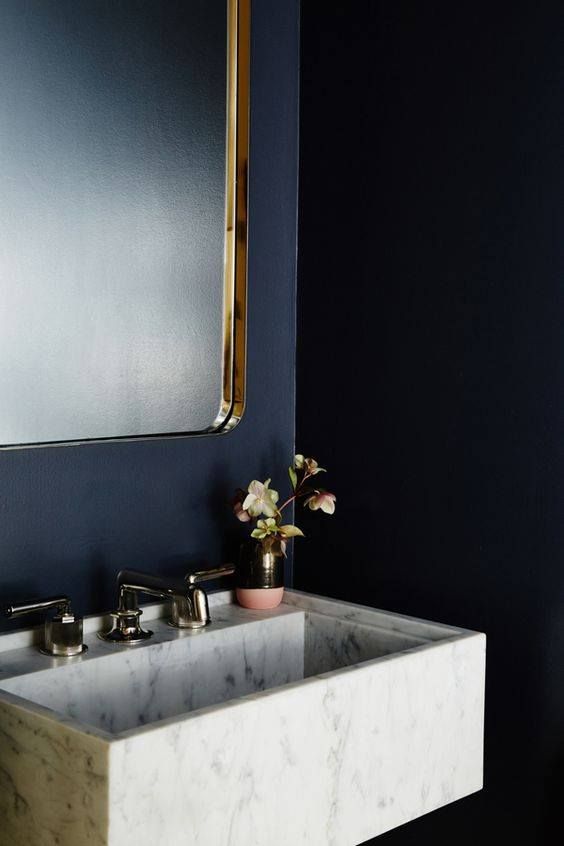
espace déco ©
Marble has proved popular in recent years and remains a mineral material which combines stylishly with wood, another fashionable natural material in our bathrooms. The combination of the two creates depth and dynamism in your bathroom.
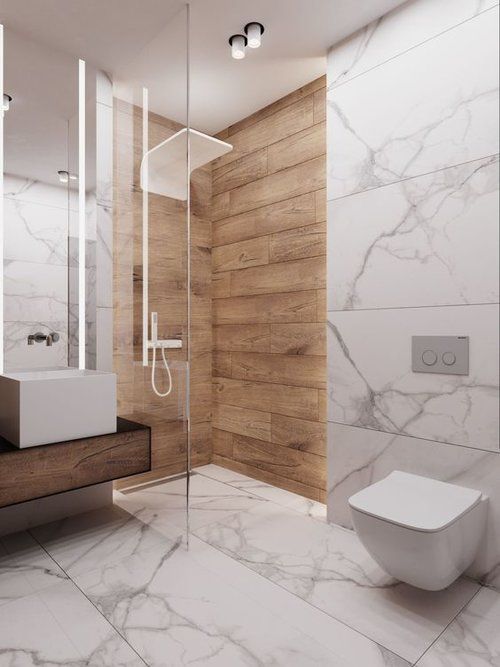
lashopagranit ©
White marble can be combined with darker colours and straight line features for a modern, classy and timeless look ! We have used marble in the shower area to add a lighter tone with a sparkling touch.
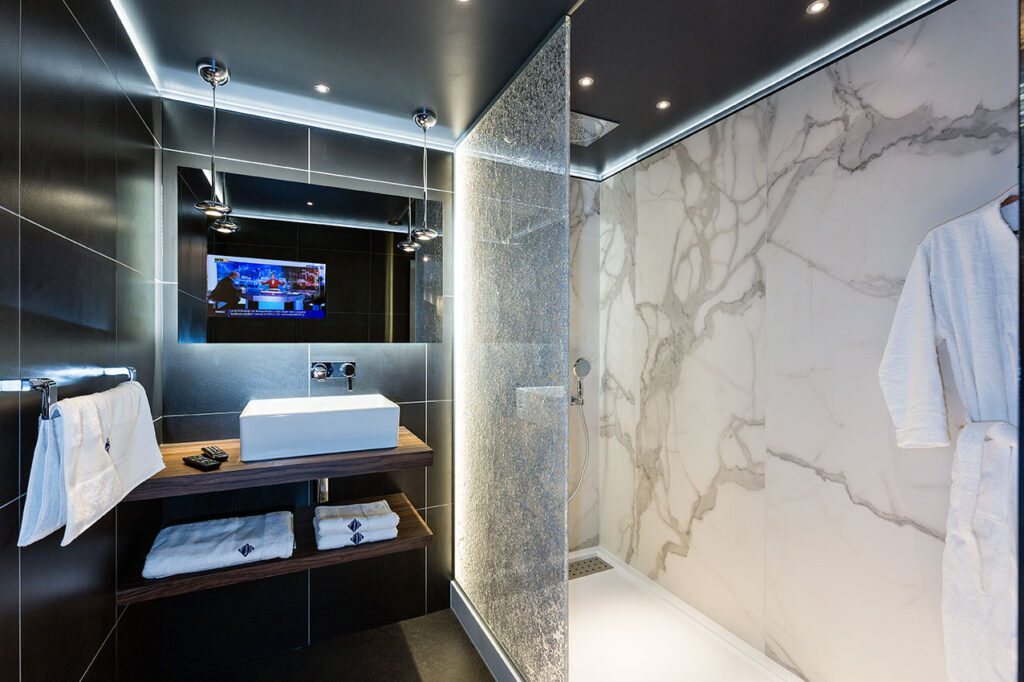
Marble can match a wide range of tones, whether dark or bright colours or pastel hues. All it takes is a colourful decorative object to create a far more cosy and welcoming bathroom.
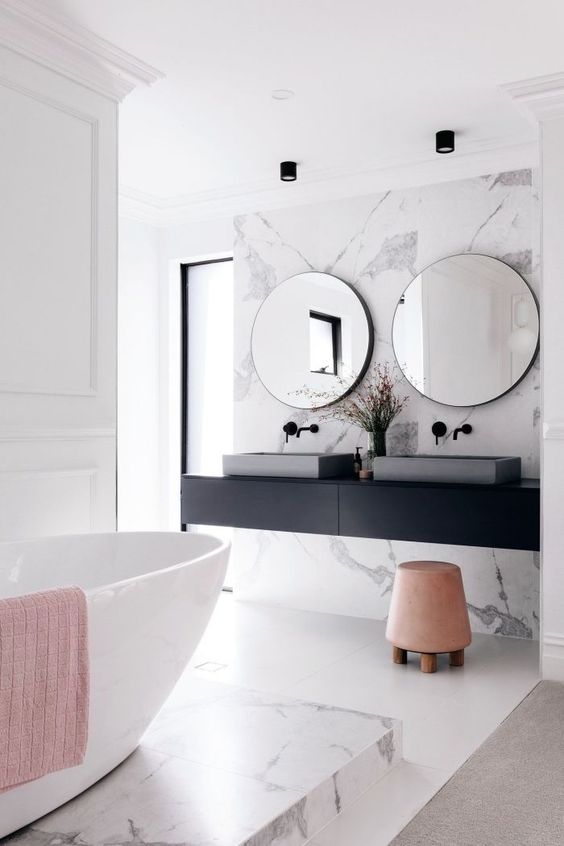
PINTEREST ©
Many objects combine marble with various types of metals: chrome, brass or raw steel.
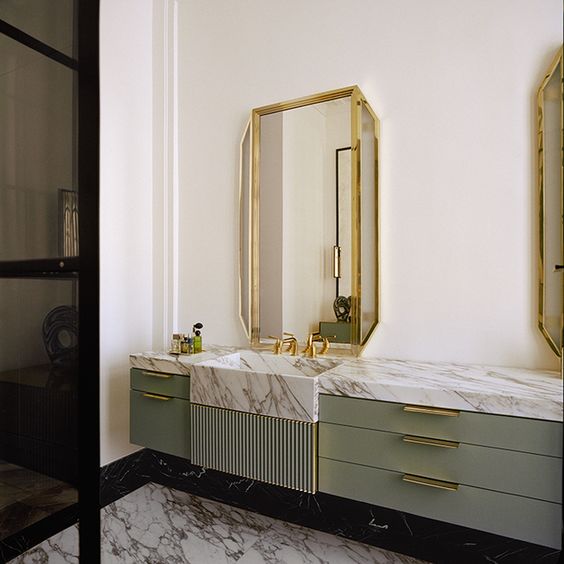
AD MAGAZINE ©
And unfailing marble fans will opt for a timeless look incorporating all surfaces from floor to ceiling. The bathroom will benefit best from this approach. Marble is right at home in a damp environment.
Marble is easy to care for in a bathroom
The marble used in our interior designs is generally an imitation material with the same properties as sandstone-ceramic or tiles in terms of the care required and strength, depending on the thickness. Nonetheless, marble has strengths to boast :
- Marble veins and markings neatly mask any signs of scale in a bathroom far more effectively than single-colour tiles.
- The trend towards larger models implies simpler maintenance as they have fewer seals. In an ideal world, a bathroom should be designed based on the dimensions of the selected marble tiles in order to optimise the number of seals required.
- Marble generally withstands impacts well.







